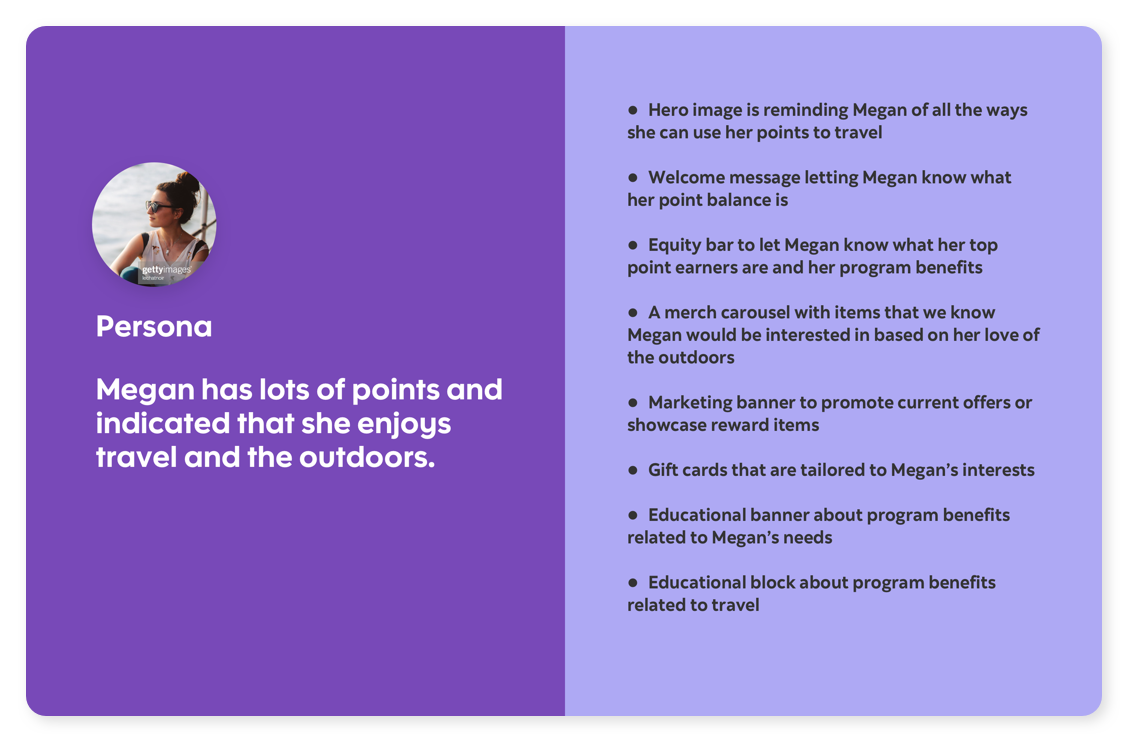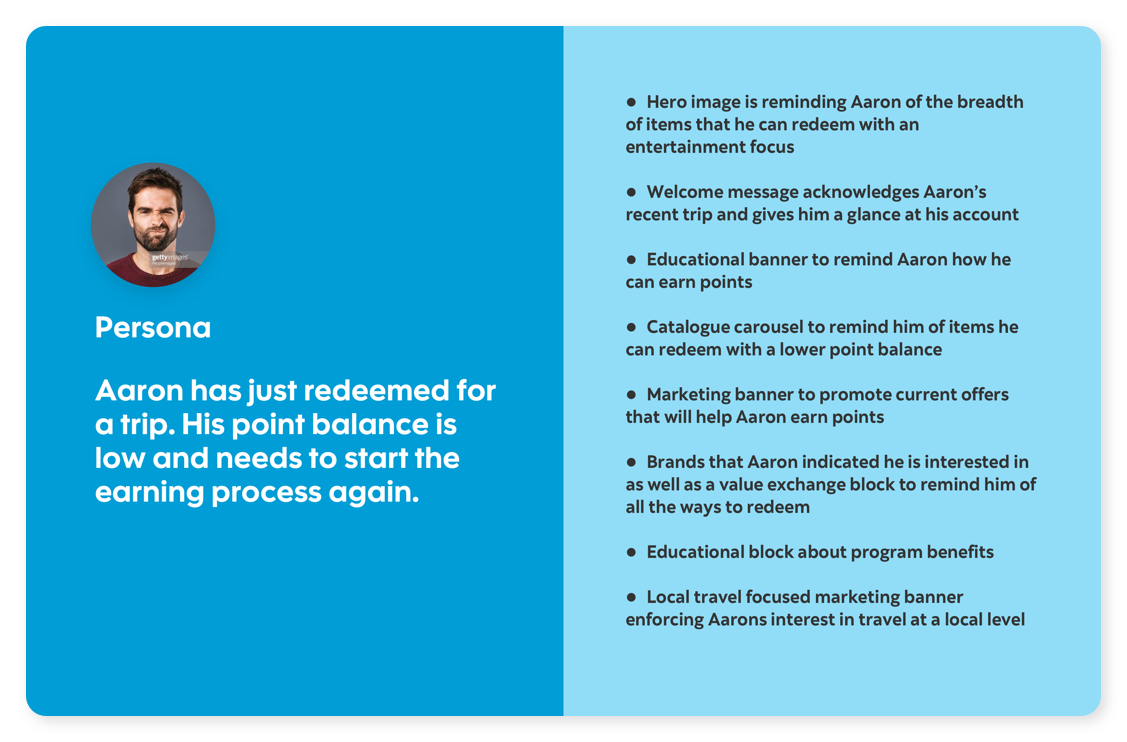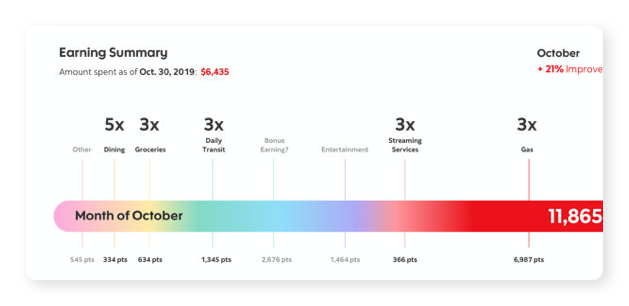Scotia Rewards
Shaping the Future of Scotia Rewards: A validated prototype driving 30+ insights, 3 prototypes, and a projected 22% lift in redemptions
My Role
Executive Creative Director — Led product vision & strategy, design execution, and client collaboration
Team Size
6 Humans (Design, Research, Content, Analytics, Strategy)
Tools Used
Sketch, InVision, Adobe CC, Jira, Slack, Maze
TL;DR
Scotiabank’s loyalty program needed more than incremental updates. It required a comprehensive vision that could reposition loyalty as a driver of emotional connection. I brought together senior designers, content strategists, and agency partners to reimagine the end-to-end experience. Through a unified design strategy validated with customers, I aligned executives and delivery teams around a North Star that transformed loyalty from a transactional program into a meaningful brand touchpoint.
The Problem
Scotiabank’s rewards experience had become fragmented and complex, leaving customers with the perception of low value. Navigation and redemption patterns were confusing, and the program was falling behind competitors.
The challenges extended inside the organization. Business groups operated in silos, each driving their own priorities without alignment to a shared vision. The result was an inconsistent experience that limited the program’s ability to deliver meaningful impact for customers or the business.
The Solution
In four weeks, I shaped a new vision for Scotia Rewards that redefined the program’s potential. Research generated insights that informed multiple prototype directions, culminating in a validated high-fidelity experience.
Maze testing was integrated into the process, giving executives and delivery teams direct visibility into customer feedback that guided decisions. By opening design artifacts and running weekly reviews, I built transparency and alignment across business, design, and product leaders, ensuring the North Star vision was understood and supported at every level.
Personas as a compass.
Before diving into design, we built six detailed personas grounded in behavioral segmentation, attitudinal insights, and customer data. These personas captured the full spectrum of customer behavior, from dormant users to everyday earners and high-value redeemers. They became a lens for identifying opportunity spaces and a compass for decision-making throughout the sprints, ensuring that every concept was anchored in real customer needs rather than internal assumptions.


Sprint Day 1, Alignment.
The first day focused on alignment. We brought together the core team, strategists, and client stakeholders to define the sprint challenge. Through mapping exercises and structured discussions, we identified the primary problem to solve: how to create a loyalty experience that was more intuitive, more valuable, and more emotionally resonant for customers.
Sprint Day 2-3, Design.
The next two days were devoted to design exploration. I set the framework for how we would create, review, and refine ideas while giving the team freedom to push into new possibilities. Designers prototyped concepts, content specialists shaped the narrative, and strategists tested assumptions. Each day ended with an open share where work was critiqued in progress, ensuring that feedback flowed quickly and that stakeholders could see how ideas were taking shape. This balance of structure and creativity kept momentum high while making the process transparent and collaborative.
Sprint Day 5, Decide.
The final day brought everyone together to make decisions. Because the work had been shared in motion all week, stakeholders arrived informed and engaged, ready to focus on what was resonating most. Together we evaluated the concepts, identified the strongest directions, and agreed on which ones should move forward into testing. This collective decision-making gave the team clarity, built confidence in the process, and ensured that the prototype reflected both customer insight and organizational alignment.
Sprint Day 4, Critiques.
By the time we reached day four, designers had already been sharing progress throughout the week, posting daily updates that allowed stakeholders to see the work in motion and offer early reactions. This steady exposure meant that critique day was not a surprise review but a focused conversation. Together we looked at the concepts in depth, assessed what was resonating, and clarified where ideas needed refinement. The open, transparent format made feedback constructive and actionable, ensuring the strongest directions had the support and clarity to move forward.
Grounding the prototype in research.
After the decision point, we packaged designs for testing and moved directly into research. To validate our thinking as we worked, we used Maze to run quick, focused studies with users, examining comprehension, navigation patterns, and early design assumptions. Feedback came in rapidly, giving us the ability to adjust flows, refine copy, and sharpen interactions in real time. Maze testing revealed a 40 percent improvement in task completion rates and a 25 percent lift in user confidence navigating the new rewards flow. These early signals validated our sprint direction and gave the team confidence in what to prioritize and scale next.
Results & impact
The final output was a validated prototype supported by detailed flows, restructured navigation, and elevated UX concepts. It became a north star for future delivery teams and helped the bank see loyalty not as an afterthought but as a strategic lever for brand connection.
Continue browsing most recent work.











